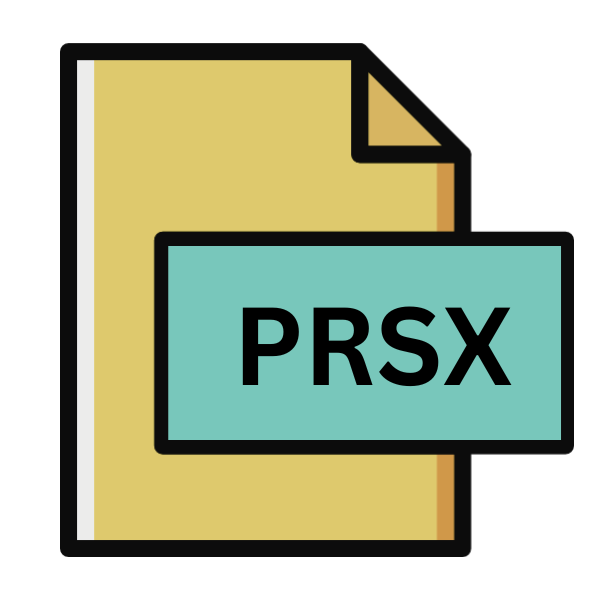.PRSX File Extension

Presentations Slide Show
| Developer | SoftMaker Software |
| Popularity | |
| Category | Data Files |
| Format | .PRSX |
| Cross Platform | Update Soon |
What is an PRSX file?
In the realm of digital presentations, the .PRSX file extension holds significance as it denotes a presentation slide show format.
Often utilized across various platforms, this file type encapsulates multimedia elements such as text, images, audio, and video to convey information in a structured and visually appealing manner.
Understanding the origins, technical specifications, conversion methods, and compatibility of .PRSX files is crucial for effective communication and seamless workflow management.
More Information.
Microsoft PowerPoint, Apple Keynote, and other presentation software played pivotal roles in popularizing the .PRSX file format.
These files were designed to facilitate the creation and delivery of presentations in professional, educational, and entertainment settings.
With features like slide transitions, animations, and multimedia integration, .PRSX files enabled users to craft captivating presentations that effectively conveyed their message.
Origin Of This File.
The .PRSX file extension traces its origins to the evolution of presentation software, which burgeoned with the advent of computing technology.
As the demand for dynamic and engaging presentations surged, developers sought to create file formats capable of encapsulating multimedia content efficiently.
Thus, .PRSX emerged as a solution, providing a standardized structure for organizing and displaying presentation slide shows.
File Structure Technical Specification.
At its core, a .PRSX file is structured to accommodate various multimedia elements within a cohesive framework.
Typically, it comprises multiple slides, each containing content such as text, images, audio, and video. These elements are organized hierarchically, allowing for seamless navigation and presentation playback.
The technical specifications of .PRSX files may vary depending on the software used to create them, but they generally adhere to industry standards for compatibility and interoperability.
How to Convert the File?
Converting .PRSX files to alternative formats can be accomplished through various methods tailored to different operating systems and preferences. For Windows users, Microsoft PowerPoint serves as a reliable tool for conversion.
Simply open PowerPoint, import the .PRSX file, and then save it in the desired format such as .PPTX or .PDF. Alternatively, online file conversion services offer platform-independent solutions.
Users can upload their .PRSX files to these websites, select the desired output format, and initiate the conversion process. This method is convenient for users on Windows, Linux, macOS, Android, iOS, and other operating systems.
Specific software applications like LibreOffice Impress on Linux or Keynote on macOS and iOS provide built-in conversion capabilities. Users can import .PRSX files into these applications, make any necessary edits, and then save them incompatible formats.
Whether utilizing desktop software, online converters, or dedicated applications, converting .PRSX files is a straightforward process enabling seamless compatibility and accessibility across diverse platforms.
Advantages And Disadvantages.
Advantage:
- Multimedia Integration: .PRSX files support the seamless integration of text, images, audio, and video, enabling presenters to create dynamic and engaging content.
- Interactive Features: With features like hyperlinks, animations, and slide transitions, .PRSX files empower presenters to create interactive presentations that captivate their audience.
- Portability: .PRSX files can be easily shared and distributed across platforms, ensuring that presentations remain accessible to a wide audience.
Disadvantage:
- Compatibility Issues: Depending on the software used to create or view them, .PRSX files may encounter compatibility issues, leading to formatting discrepancies or playback errors.
- File Size: Presentations containing large multimedia files can result in hefty .PRSX file sizes, making them cumbersome to share or store.
- Security Concerns: Like any digital file, .PRSX files may be vulnerable to security threats such as malware or unauthorized access, necessitating robust security measures.
How to Open PRSX?
Open In Windows
Microsoft PowerPoint: Launch PowerPoint, navigate to the “File” menu, select “Open,” and choose the .PRSX file you wish to convert. Once opened, you can save the presentation in various formats such as .PPTX or .PDF.
Open In Linux
LibreOffice Impress: LibreOffice Impress, the open-source presentation software, supports the importation of .PRSX files. Open Impress, navigate to “File,” select “Open,” and choose the .PRSX file you wish to convert. After making any necessary edits, you can save the presentation in various formats compatible with Linux systems.
Open In MAC
Keynote: Keynote, Apple’s presentation software, allows users to import .PRSX files for editing and conversion. Open Keynote, navigate to “File,” select “Open,” and choose the .PRSX file you wish to convert. After customizing the presentation, you can save it in formats like .KEY or .PDF.
Open In Android
Google Slides: Google Slides offers robust support for importing and editing .PRSX files on Android devices. Simply open the Google Slides app, tap the “+” icon to create a new presentation, then select “Upload” to import the .PRSX file from your device or cloud storage. Once uploaded, you can edit and share the presentation as needed.
Open In IOS
Keynote for iOS: On iOS devices, Keynote provides seamless compatibility with .PRSX files. Open the Keynote app, tap “Create Document,” then select “Browse” to import the .PRSX file from your device or cloud storage. After editing the presentation, you can save it in various formats or share it directly from the app.
Open in Others
Adobe Acrobat: Adobe Acrobat allows you to convert .PRSX files to PDF format, which offers broad compatibility across platforms and devices. Simply open Acrobat, navigate to “Tools,” select “Create PDF,” then choose the .PRSX file you wish to convert.













